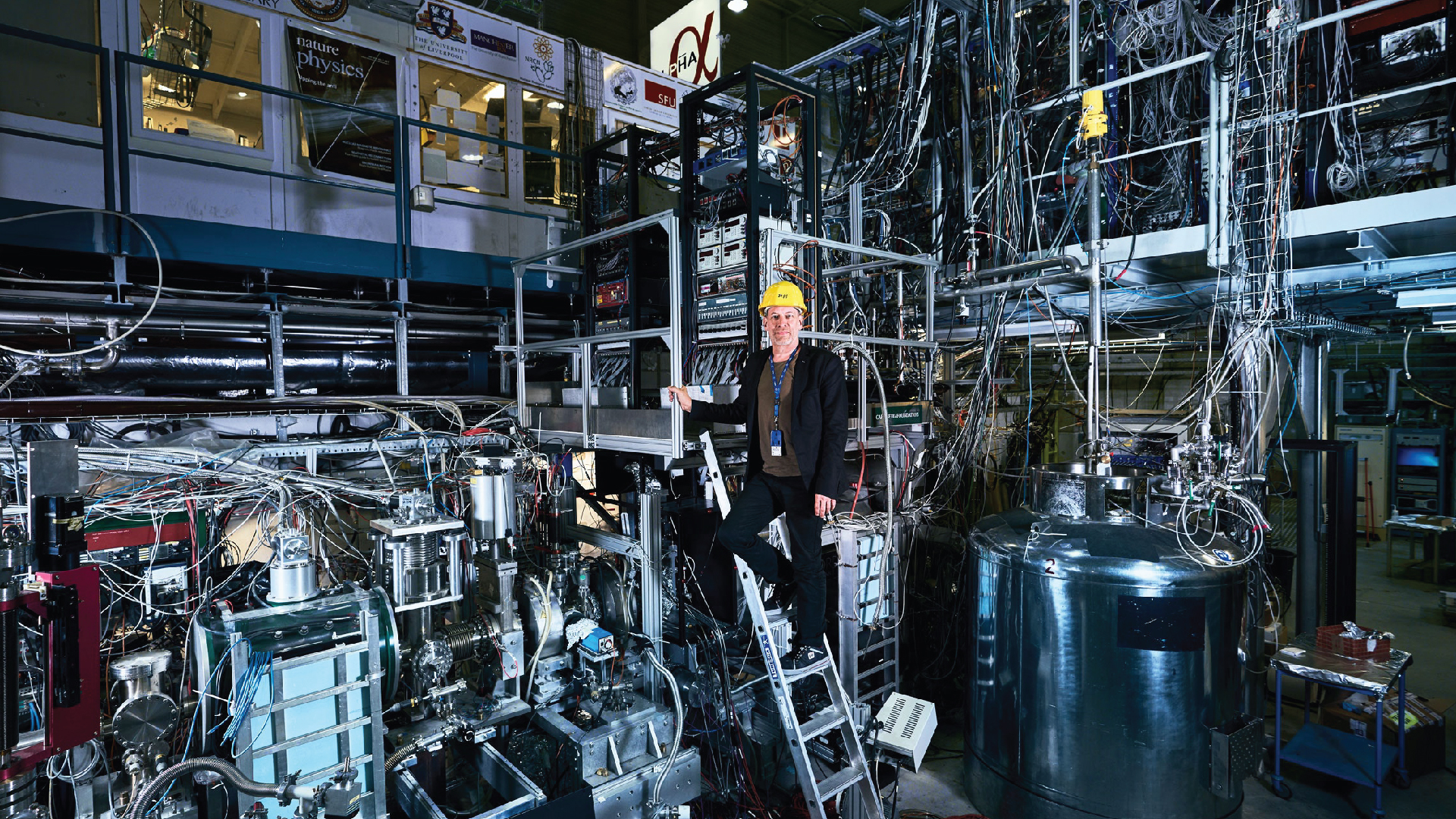CERN scientists uses lasers to cool antimatter for the first time

Geneva, March 31, 2021. The ALPHA collaboration at CERN has successfully cooled antihydrogen atoms, the simplest form of atomic antimatter, using lasers. This technique, known as laser cooling, was first demonstrated 40 years ago in the common denominator and has become a mainstay of many areas of research. His first application to antihydrogen by ALPHA, described in a paper published today in Nature, opens the door to a much more precise measurement of the internal structure of antihydrogen and how it acts under the influence of gravity. Comparison of such measurements with well-studied hydrogen atoms can reveal differences between matter and antimatter atoms. Such differences, if any, could explain why the universe consists only of matter, an imbalance known as matter-antimatter asymmetry. "The ability of laser-cooled antihydrogen atoms is a game changer for spectroscopic and gravitational measurements, and this could generate new perspectives in antimatter research, such as the creation of antimatter molecules and the development of antatomic interferometry. "said ALPHA spokesman Jeffrey. Hangst. "We are on the moon. About a decade ago, antimatter laser cooling was in the realm of science fiction."
The ALPHA team produces antihydrogen atoms by taking antiprotons from CERN's Antiproton Decelerator and attaching them to positrons derived from a source of sodium-22. It then locks the produced antihydrogen atoms in the magnetic trap, preventing them from coming into contact with and destroying matter. The team then usually performs spectroscopic studies, which measure antatomic responses to electromagnetic radiation: laser or microwave rays. These studies have enabled the team, for example, to measure the 1S-2S electronic transition in antihydrogen with unprecedented precision. However, the precision of such spectroscopic measurements and planned future measurements of the behavior of antihydrogen in the Earth's gravitational field in ongoing experiments is limited by kinetic energy or, equivalent temperature, antiatomics.
This is where laser cooling comes into play. In this technique, atoms absorb laser photons, causing higher energy states to be achieved. Counteratoms emit photons and they spontaneously return to their original state. Because the interaction depends on the speed of the atom and because photons provide a driving force, repeating this cycle of absorption and release often results in the cooling of the atom to low temperatures. In their new study, ALPHA scientists were able to cool a sample of magnetically trapped antihydrogen atoms by repeatedly feeding the antiatom from a low energy state (1S state) to a higher energy state (2P). by using a pulsed laser beam with a frequency slightly lower than the transition frequency between the two states. After several hours of illuminating the captured atoms, the scientists observed a decrease of more than tenfold the kinetic energy of the atoms, with many antatoms reaching energy below microelectrons (about 0.012 degrees above absolute zero. At equivalent temperatures). .
After the success of anatomical laser cooling, the researchers examined how laser cooling affected spectroscopic measurements of the 1S-2S junction and found that cooling produced a narrower spectral line of the junction that was about four times narrower than observations without laser cooling. "The laser demonstration of antihydrogen atom cooling and its application to 1S - 2S spectroscopy is the culmination of many years of research and antimatter development on CERN antiproton inhibitors. By far, this is the most difficult experiment we have ever done," Hangst said. “Historically, scientists have tried to cool normal hydrogen with lasers, so it has been a crazy dream for us for years,” said Makoto Fujiwara, the first proponent of using pulsed lasers to cool. imprisoned in ALFE. "Now we can dream of something even crazier with antimatter."
Source page : CERN, 31 March 2021, ALPHA cools antimatter using laser light for the first time